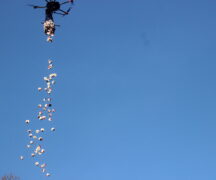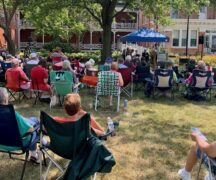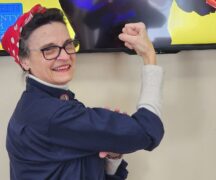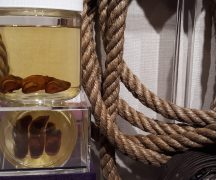By JAN LARSON McLAUGHLIN
BG Independent News
The Wood County Museum curator loves heirlooms that tell stories.
But please, no more parlor organs.
“We don’t take parlor organs. We already have six,” and each takes up sizable space, according to Wood County Museum Curator Holly Hartlerode Kirkendall.
But whatever else potential donors may have, Kirkendall can’t resist taking a peek.
The room after room after room of third floor attics at the Wood County Museum finally have storage systems that keep artifacts in good shape, and make them easy to retrieve when needed for an exhibit.
But just because the museum has all this organized space for collections doesn’t mean people can just drop off family heirlooms that they are convinced others will want to see, Kirkendall said.
“We can’t obviously collect everything,” she said.
There are only so many old barber chairs (the museum has two now) and Barbie dolls (there are several) that a museum needs.
“It’s good to contact me before you show up with an armful of things,” Kirkendall said.
Every item donated to the museum goes through a multi-step process before it’s accepted. First, the potential donor takes a photo of the items on their phone and then emails some details to Kirkendall.
A committee of seven people make up the accession committee, which includes a member from the Wood County District Public Library, one current and one past member of the Wood County Historical Society Board, two members from the Wood County Genealogical Society, one from the BGSU Center for Archival Collections, and one from the BGSU Popular Culture Department. That committee decides if the item would be a good fit for the museum.
As curator, Kirkendall does research on items and interprets their role in local history. As collections manager, Kirkendall decides how and where an item will be stored. And the registrar works on the paperwork transferring ownership.
It can be hard to say “no” to bits of history, Kirkendall said, acknowledging that the museum accepts about 90% of the items offered.
Donated items move up to the top of the list if they have a definite Wood County connection. And they quickly pass any roadblocks if they come with stories intact.
“An object is just that,” Kirkendall. But if it has provenance – that’s another story. “If it has a story, it makes a bigger connection with visitors.”
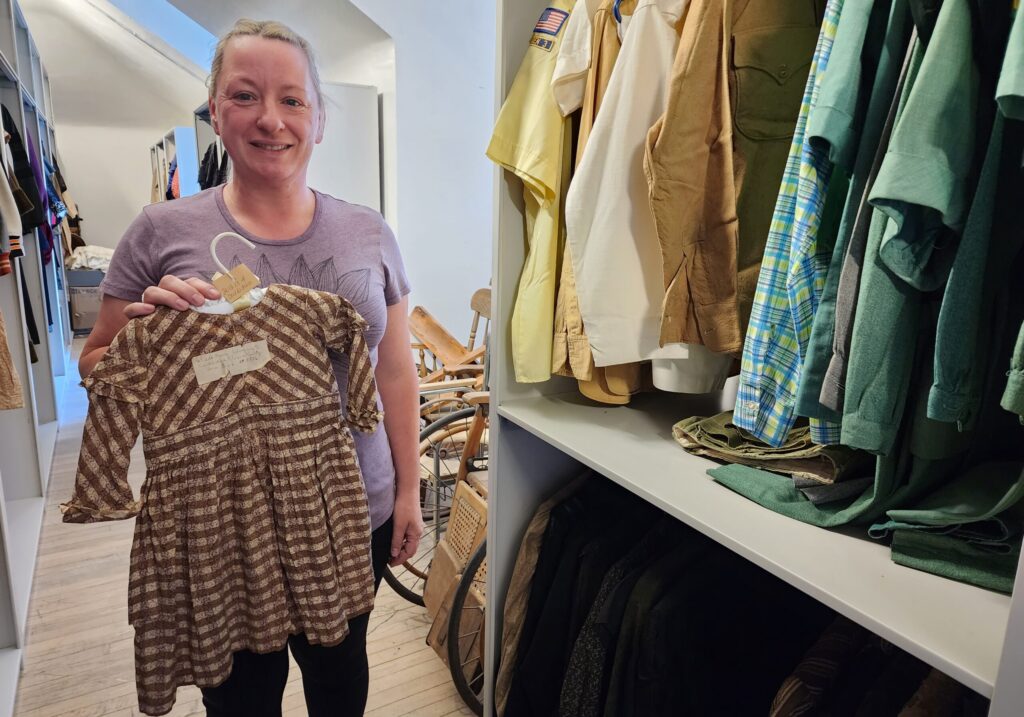
As a curator, it’s common for Kirkendall to get all giddy about donated items. But she remembers one particular item that made her heart skip a beat.
A woman brought in a child’s dress dating back to 1856. The museum has many dresses from the past century – but none going back to the mid-1800s.
“I about jumped out of my skin to rip it out of her hands,” Kirkendall said with a grin. “It’s so rare. I can tell by the style and the cut of the dress itself.”
The attic is full of treasures – giant crocks for making pickles, battered toy trucks, canning items, tea kettles, meat grinders, trophies, and a “permanent wave machine” for women’s hair that looks like a torture device.
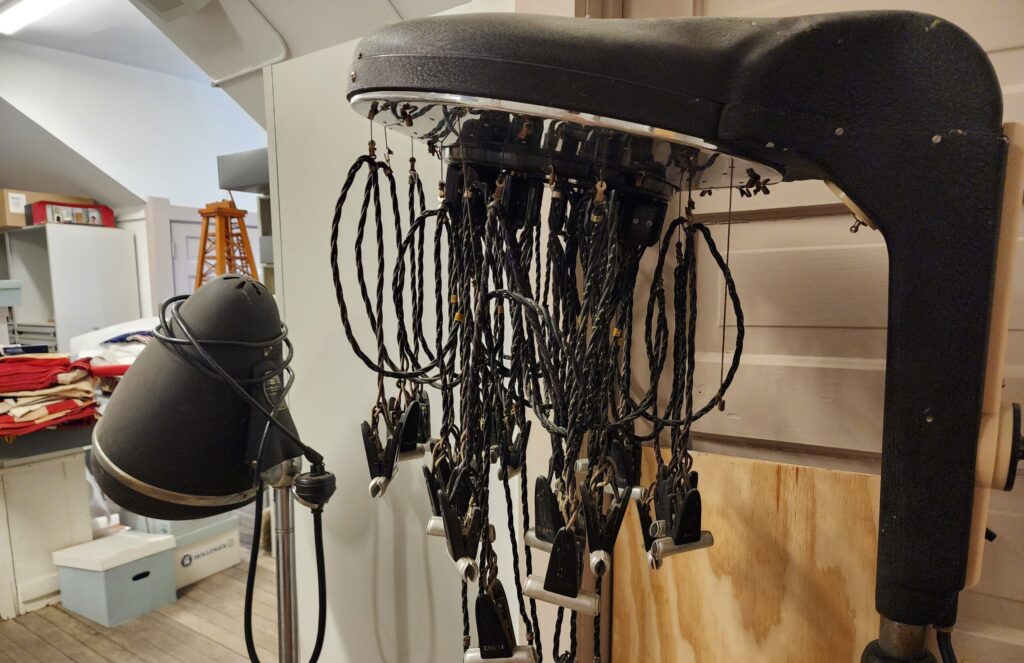
There are racks of military uniforms, scouting uniforms, daintily embroidered handkerchiefs, medical devices, musical instruments, textiles, elegant women’s hats, voting memorabilia, old cash registers, scales, police and fire artifacts.
And now, the items are stored for preservation and organized access.
“I don’t have to go searching through 50 boxes,” Kirkendall said.
Sometimes, other more appropriate homes are found for the items to be donated. For example, a woman approached the museum about accepting a large number of puppets that her aunt had made and used for performances.
The aunt had no connection to Wood County, but Kirkendall discovered that a library in Rhode Island had a collection of the woman’s puppets since she often performed there. That library was thrilled to get the additional items.
In another example of collaboration, the museum asked the BGSU archives to preserve about 750 letters exchanged between two former employees of the Wood County Infirmary, decades before it became a museum.
“That was a treasure,” Kirkendall said of the correspondence between LaVerne Snyder and Harold Patten. The couple was married 1946, with LaVerne’s dress being made from a silk parachute sent to LaVerne by Harold Patten’s brother Frank while he was stationed in Germany.
Such a relationship between the library and museum benefits all, Kirkendall said.
“The library is an ally. We are collaborators – not competitors,” she said.
And every once in a while, when the museum has too much to maintain, donations may be deaccessed. This is also a team decision of the collections committee. Such decisions aren’t taken lightly, and if possible items are given to other museums or auctioned off with the money going toward collections.
“This is a standard museum procedure,” Kirkendall said.


